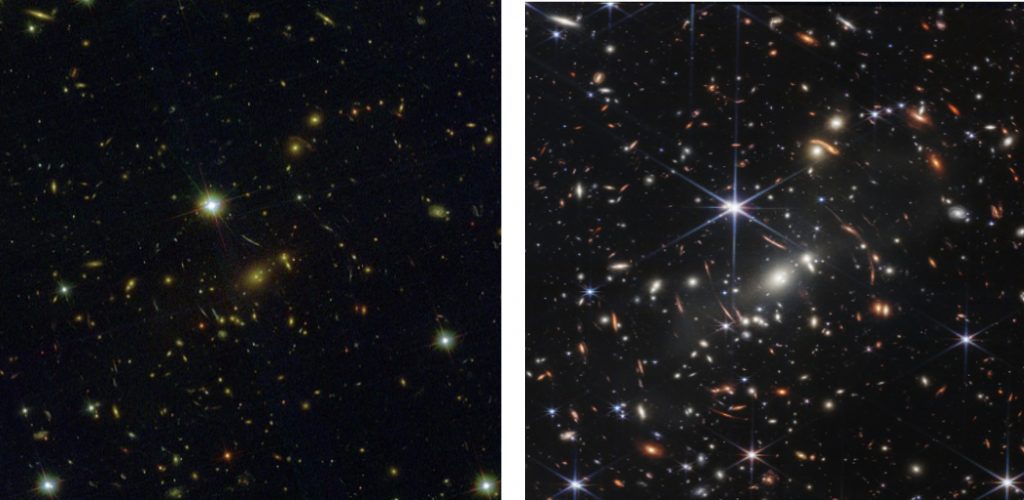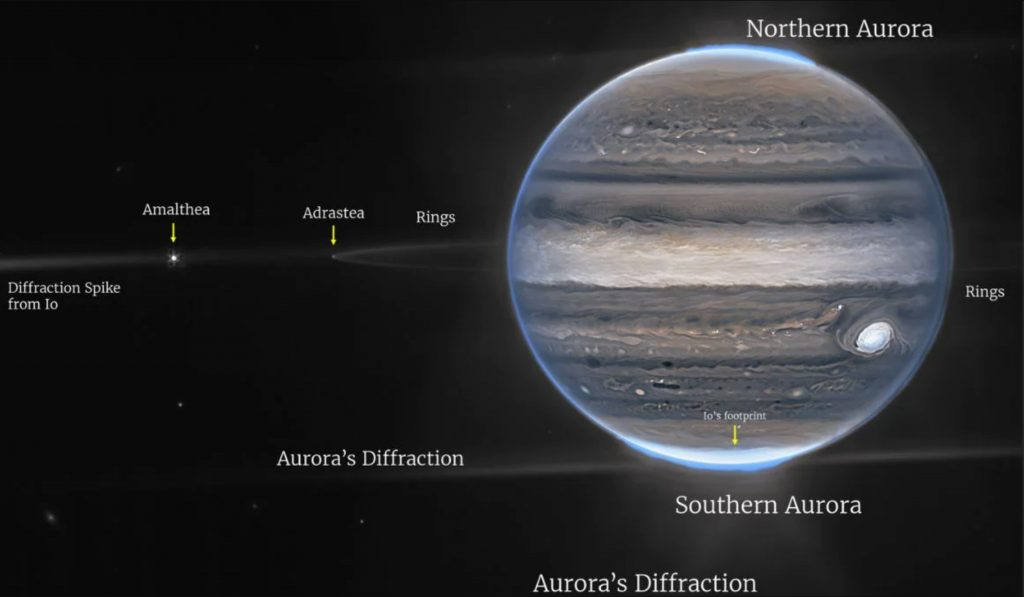In this guest blog post by Leicester student Roshni Bakrania, which summarises a ResearchBites talk by Dr. Henrik Melin, we explore the results from the first few months of observations by JWST.
December 25th 2021 marked an exceptional day for NASA, ESA and the Canadian Space Agency, as the James Webb Space Telescope had finally been launched, in search of the first formed galaxies of the Universe. July 2022 marked the first images collected by JWST.
As a part of the project, the University of Leicester made a significant contribution to the telescope with the Mid Infra-Red Instrument, MIRI for short, which focuses on collecting data from wavelengths between 5-28 microns. These signatures would reveal the stars and galaxies red shifted out from the start of the Universe. JWST is currently observing those distant points in much more detail than Hubble could and producing incredible high-quality images, such as the Carina Nebula, a star forming region under gravitational collapse and radiation pressure creating empty areas inside the gas.

Amongst the spectrum of galaxies, JWST has captured the farthest galaxies seen to this day, which actually provide some evidence of the earliest forming galaxies and the evolution of the Universe. The images below show a comparison of the same image taken by Hubble (left) and then by JWST (right), and the immense amount of detail contrasted is incredible. From JWST, there is a small speck of red in the upper left side of the gravitational bending, which is actually the farthest galaxy viewed.

The University of Leicester is using the James Webb telescope to focus on the gas giants in our Solar System (Jupiter, Saturn, Uranus and Neptune), specifically their aurorae. The Earth’s aurorae are caused by the interaction of the solar wind with the planet’s magnetic field, where some of the bombarded charged particles are trapped and are accelerated towards the polar regions creating the beautiful glow of greens, purples and even oranges across the sky.
Jupiter, on the other hand, is the largest planet in our Solar System, and possesses the largest magnetosphere. However, aurorae created on the planet are not from the planet itself, but tracing the magnetic field lines back, it leads to one of its 80 moons – Io. The most volcanic terrestrial-like object in the solar system, Io’s volcanoes eject material into space, which is trapped in Jupiter’s magnetic field of and ionised producing the aurorae seen at the poles.

Other than the auroral ovals observed, Jupiter has extremely faint rings, and not only that, there is a glow surrounding the planet, possibly from emission from high-altitude layers. The equatorial region of the planet appears white due to reflection from hazes in the atmosphere, however the Great Red Spot appears white as well due to the high altitude of aerosols. Maybe JWST will be able to indicate to us why there is a haze in the first place, and why it is red in colour.

 Subscribe to Physics & Astronomy's posts
Subscribe to Physics & Astronomy's posts
Recent Comments